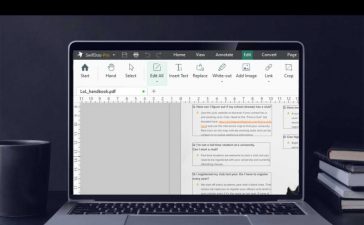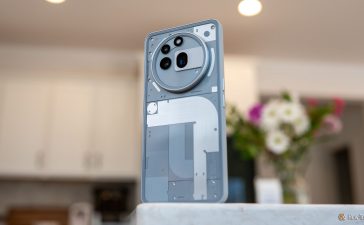While iPhones are seeing increasing use in the enterprise, most users could be getting a lot more productivity from their devices.
That’s the essential argument made in a Deloitte report, which points out that while most of us have become accustomed to using smartphones for communications (email, calls, calendar management, messaging), their potential as highly mobile computing devices often remains unexplored.
Even simple tasks such as expense tracking, simple document editing, or time sheet recording are mostly done on other devices, which suggests the scale to which iPhone-toting knowledge workers aren’t fully exploiting the full potential of their device. What makes this particularly odd is that when handling personal “stuff,” most people already engage in bill payments, online shopping, and equivalent tasks.
We’re digital natives in our personal lives, less so at work — though the move to remote working may be changing that. We know the overall employee experience is tech-based, but still haven’t optimized what that means.
A work in progress
This disconnect is a work in progress, but likely reflects a productivity benefit that remains to be explored. “The increased use of smartphones for administrative processes has great potential for increasing efficiency, enabling companies to save costs and remain competitive,” wrote Roger Lay, director of mobile enterprise at Deloitte Digital.
This is an argument I’ve heard before. SAP Mobile Experience Product Manager Martin Lang has been a long-time advocate for the opportunity to make more use of mobile devices (and Macs).
“Other than email and collaboration, we do almost nothing with our phones and very few of us have started to receive push notifications at work for important or required actions or relevant news,” he told me a couple of years ago; in many businesses, nothing much has changed.
That’s strange, given the cost of smartphones and the capabilities they offer. Think about Lockscreen widgets — did you know, for instance, that IT shops using Jamf for MDM can deploy an iPhone widget to show the ratio of managed iOS devices updated to a current iOS version? Making critical data glanceable and easily available is just one way in which the potential of smartphones can be unlocked.
Thinking different?
Look around and you’ll find dozens of case studies of interesting and innovative uses. iPhones are widely used by flight crews across several airlines to manage passenger experience in flight; in Tokyo, iPhones and iPads are used to manage subway tunnel maintenance; and we’ve all signed delivery sheets on mobile devices.
When it designed its device, Apple set out to, “completely rethink mobile, to enable the things we knew that people wanted to do, including at work,” said Susan Prescott, now vice president for worldwide developer relations and enterprise and education marketing at Apple.
IT spending is expected to move away from hardware in favor of software, cloud, security and IT services during the next 12 months.
A Morgan Stanley client note distributed today states: “2023 spending growth expectations for IT Services remained relatively stable at +2.4% this quarter, moderating … from the +2.5% in 2022 and 4Q22.”
But with this in mind, particularly as companies seek out ways to handle talent scarcity and build productivity, it feels counter-intuitive that for many businesses the tools to unlock further productivity are already in employee hands.
Something in the way
There are obstacles to overcome, of course. For example, Apple Pay integration for enterprise users would improve if it were possible for IT to temporarily setup remote devices with company credit cards, such as when a worker is on a business trip.
It would be useful if Apple could find some way to support an iCloud Keychain for the enterprise within Managed Apple IDs to insulate enterprise passcodes from personal devices. Many businesses would benefit from a simple and accessible way to harmonize managed Apple IDs in workplaces in which personal Apple ID use has become rife.
And, of course, tens of thousands of enterprises outside the US wonder why it is that Apple Business Essentials remains unavailable to them.
But problems aside, what is holding up the process of digital transformation? I think it’s leadership.
I suspect that in many cases, business leaders find it hard to accept that smartphones can become business essential tools. They don’t want to see employees staring at their phones, because they can’t get rid of an anachronistic concern that they may be checking personal email.
We know that many employers, and many in middle management, continue to resist the evidence and believe remote and mobile employees aren’t as engaged with the company as those making desultory conversation around dusty, half-empty watercoolers.
It’s a mind-set for failure.
It’s reasonable to think that one of the obstacles to getting the most out of the computer every employee already has with them all the time (the phone) is a lack of vision on the part of management.
That lack of imagination means they’ll still demand use of a PC-only system for expenses tracking, even though it’s probably the least efficient way to achieve that task and doesn’t empower workers to make the best use of their time.
Yet, as economic challenges continue to grow, surely it is now past time to unlock the potential productivity opportunities locked in smartphones — even if all that can be swiftly put in place is a mobile solution for expenses tracking.
Please follow me on Mastodon, or join me in the AppleHolic’s bar & grill and Apple Discussions groups on MeWe.
Copyright © 2023 IDG Communications, Inc.












